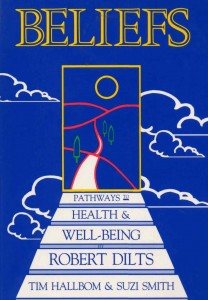
We common say that: only ‘change’ is constant. However you know as much as I do how difficult it is to cope with change. More importantly to get your colleagues to change to live up with the ever-changing environment is the greatest challenge of most entrepreneurs and managers.
Reading the book written ‘BELIEFS  Pathways to health & wellbeing’ by Robert Dilts & two of my NLP tutors: Tim & Suzi  help me much to understand the concept of   ‘change’ and  gave me some practical tools to achieve ‘changes’ in me and others.
I have since an e-copy of the book and would be glad to share it with you. Read below an extract of the introduction to the book. You might be interested to know that Robert Dilts cured her mother’s breast cancer, which had reached a degree of metastasis, by changing her beliefs.
Would you now invest some time to document yourself on the power of ‘Change’?
My sincere wish is to make know this method of ‘BELIEFS CHANGE’ to attempt to alleviate the pains of the drug addicted population of our nation.
Change is a multilevel process . . .
We make changes in our environment;
Changes in our behaviors through which we interact with our environment;
Changes in our capabilities and the strategies by which we direct and guide our behavior;
Changes in our beliefs and value systems by which we motivate and reinforce our guidance systems and maps;
Changes in our identity of which we select the values and beliefs we live by;
Changes in our relationship to those things which are bigger than us, those things that most people would call the spiritual.
This book is about gaining more choices at a particular level of change—the level of beliefs. The purpose of this book is to provide conceptual and interactive tools necessary to understand and gain more choices within the belief systems that guide our behavior in the world around us.
I first began exploring the processes involved in changing beliefs in earnest when my mother had a recurrence of breast cancer in 1982 with a fairly wide degree of metastasis and a poor prognosis for recovery. It was in helping her on her dramatic and heroic road to recovery, elements of which are described in this book, that I became intimately associated with the effects of beliefs in relationship to a person’s health and in relationship to the other levels of
change involved in making complete and lasting behavioural change.
The first “Beliefs and Health” workshop was conducted in December, 1984. Most of the concepts and techniques described in this book are a result of that program, the
programs that have followed, and also of the work that I have done with particular individuals who were engaged in both life threatening and life transforming changes. While
the roots for the concepts and techniques presented in this book have reached widely and deeply, it draws most heavily on the principles and techniques of NeuroLinguistic Programming. The sources for the material in the book are primarily advanced NLP seminars in which the issue of
beliefs was being presented and dealt with as an advanced level skill.
The book is written in such a way that you can associate into being a participant in an actual workshop. Imagine that you are there, watching the demonstrations, listening
to the questions and answers, and participating in the discussions and exercises.
The primary purpose of the book is to provide the “how to’s” of belief change—although I hope you, as a reader, will find inspiration as well, within the concepts and examples
of the people that make up this book. I should also point out that this is such a rapidly
developing area in NLP that we already have enough updates and new techniques to fill a second volume. Thus I recommend that you approach this book as a way of expanding
your own beliefs about the possibilities and methods involved in the process of lasting change, as opposed to a simple description of techniques or procedures.